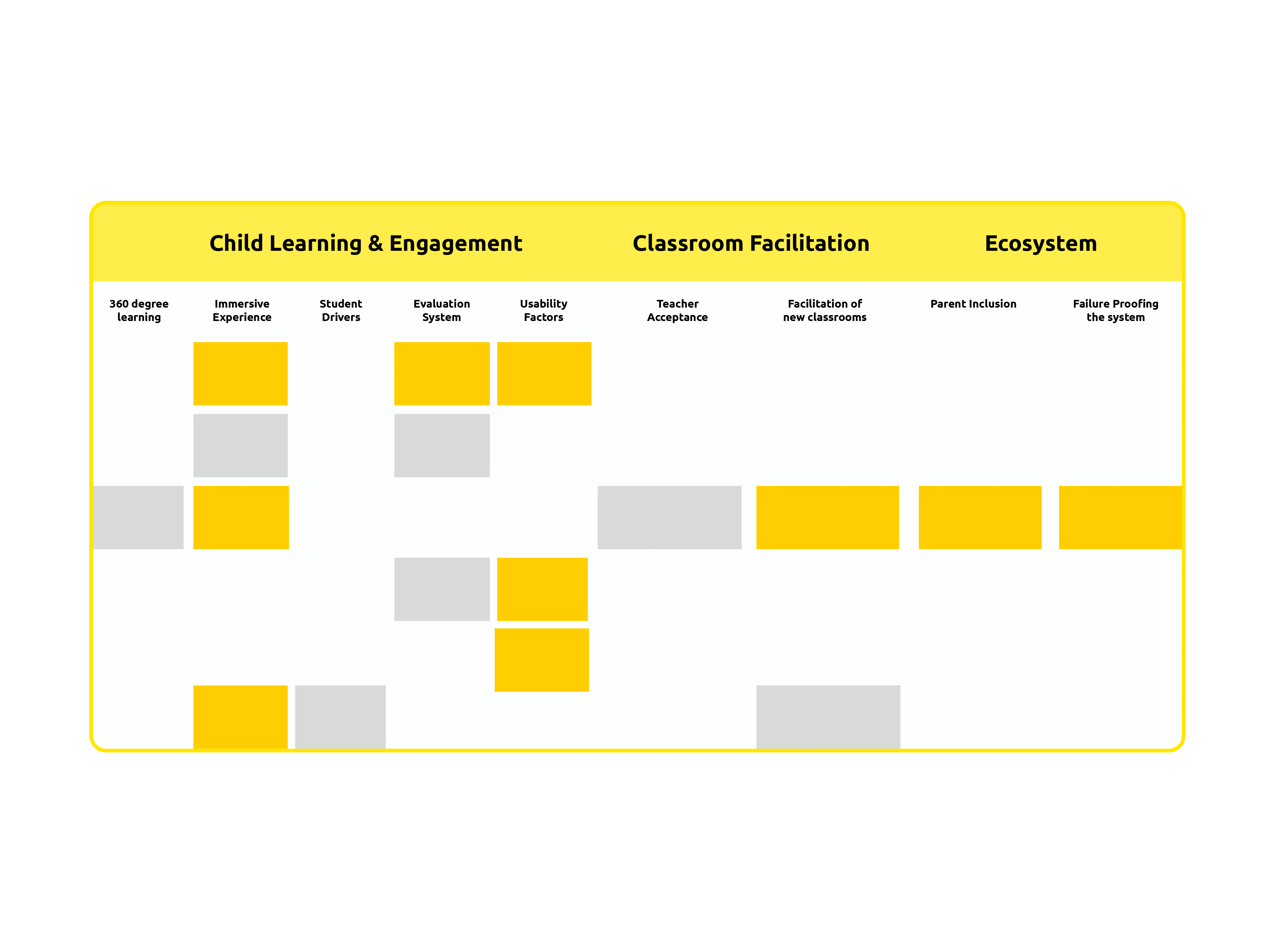Everything you need to kickstart design research.
Research is the most crucial step in innovation, as it provides an understanding about users’ behaviour and actionable insights anchored in their behaviour, needs and dreams for the future.
Unlike conventional research methodologies, design research amalgamate and curate methods and techniques from the toolboxes of ethnography, anthropology etc. to discover not just insights, but a whole new perspective and fresh ideas which you would never dare to think!

open-source archive of Innovation Methods

Designing an integrated e-learning service for urban-poor schools in India
Translating TINWAY's new learning methodology into an integrated product strategy and roadmap.
Empathy | Design Sprint | Service Design
What was the
Challenge?
Tinway is a social enterprise with the spirit to provide ‘meaningful education’ at grass root level.
Their vision is to ensure a more personalised learning experience for the rural and urban poor students and empowering Govt. school teachers for better facilitation of the classroom.
What was the
Outcome?
Design Thinking Sprint with Tinway led to Design Directions & and a Strategy to envision the Product. A Product evaluation & success matrix emerged from the Strategy which helped in planning a successful Pilot
-
Design Directions & Strategy
-
Product Vision & Roadmap
-
Product evaluation & success matrix for Pilot
Methodology
Design Sprint
Tinway has been developing an innovative learning methodology, based on childs’ natural learning curve. Despite their immense efforts, they were riddled with questions like
“What is needed to build an experiential learning product”
“How to translate their learning methodology into an in-class digital product ”
“Is there a way to design for each stakeholder”
“How to build & test for a fail proof digital solution”
“What should be the go-to market strategy”
An immersive Design Sprint was designed to translate their methodology into an in-class experiential product.



We have worked on the methodology for over a year and I am sure it works, but now we want to build a complete learning experience to ensure that a child is able to learn the soul of the language.
Payas Agrawal
Co-Founder, Tinway

Download
Insights from TINWAY’s journey so far
We began with cultivating an understanding of Tinway’s product and ideology by the shared knowledge of its key stakeholders. We worked closely with the stakeholders to understand, learn from, and ultimately, design for, their knowledge and experiences. Our research equipped us to develop certain key insights about the product, its users, and their environments. We also rigorously analysed the challenge from the inside out, churning out important insights and questions that were instrumental in defining the product.
#research #insights #stakeholder #empathy
Engagement
Defined by how much the users love the product. To design a desirable product, we must look at the emotional aspects of the users’ behaviour
Personalisation
Product considerations while building it for different paced learners and for enabling teachers for better handholding.
Humanisation
Defines the product’s behavioural aspects to be taken into consideration what a critical for a young user.

Define
Design directions through co-creation
Having derived the insights on how the product could be designed for creating maximum impact, they were articulated into “How Might We…” questions, that would help us extricate creative ideas from these insights. These questions set the parameters for product development, and also gave the team a framework to begin ideating and innovating.
The interdisciplinary team of professionals and designers discussed these questions, and brainstormed ideas ranging from redundant to radical, pragmatic to idealistic, from informed to groundbreaking. These ideas were evaluated, synthesized and then mapped together to derive a set of directions and solutions for different aspects of the product development.
#redefine #How_might_we #brainstorm #ideation #designdirections


Strategise
Product Roadmap for Pilot
The design directions were used to derive the product strategy for Tinway. Each design direction was evaluated on Impact and effort, and prioritized keeping in mind the key problem areas of learning inside the classroom. This enabled us to design a product roadmap that will assist Tinway in making product decisions, and also serve as a go-to guide for the design, evolution and realization of the product. The process of design thinking has led Tinway’s vision for its product from being powerful but ambiguous to being innovative and articulate, and provided them with the roadmap to drive the pilot.
#product_strategy #impact #product_roadmap #evaluation #pilot

Now I can finally see how this product is going to shape up. This process has helped us make decisions about the product as well as the Market strategy.